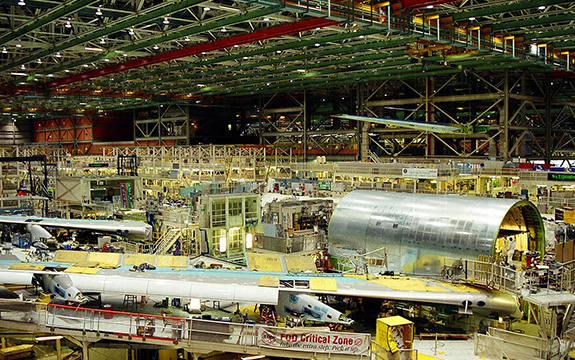Parts and components trade may well save the economy

In Summary
- Analysis for The Conversation by Professor Beth Webster, Swinburne University of Technology
Most of us are all too aware that production chains are becoming more globally integrated. More and more businesses and research organisations now contribute smaller slices to larger audiences of consumers.
The message for business is:
- Find a niche
- Keep on developing it – be the best in the world
- Protect your investment through appropriate intellectual property
- Sell your slice into products that reach 7 billion consumers.
Production chains are increasingly being spread over multiple firms and multiple countries. Many erstwhile manufacturers in advanced economies now focus on value creation through intangible assets of brand, technology and design. Examples include high-tech brands such as Apple, Mercedes Benz; dry-lab biotechnology companies such as IntelliMedical; fabless semi-conductor firms such as Qualcomm; and low-tech brands such as Rivers and Saltwater Seafoods. Such businesses are accordingly being re-classified as belonging to the industries of ‘professional services’ or the ‘wholesale’ or ‘retail trade’ although they are still delivering tangible goods.
The traditional definition of ‘manufacturing’ which hinges on the assembly of goods does not cover the largest value added portion of the production of many goods. Only 2% of revenue from the iphone goes to workers in China who assemble it.
Studies, for example by Baldwin (2013), based on value-added trade data have revealed that 21st century trade is characterised by the nexus of trade-investment-services-intellectual property.
This evolution in global business models has been shifting the source of competitive advantage. Developed countries can no longer derive competitive advantage from craft-style capabilities as education and training becomes more ubiquitous throughout developing economics. The reduced costs of transport and contracting, and pervasiveness of skill, means that multi-national firms can shift suppliers with relative ease. Accordingly, many inputs have become commodities trading at mere cost and input–suppliers have difficulty capturing profits.
The studies by Professor Prema-chandra Athukorala, Australian National University are particularly revealing. He has found that trade in parts and components started with semiconductor assembly in the 1960s but has expanded to encompass a wide range of products: electronics and electrical goods, machine tool, automobile, cameras and watches, pharmaceuticals, bio-medical equipment, solar panels, light emitting diodes (LED).
Three mutually reinforcing factors have contributed to this production fragmentation:
- Advances in production technology, enabling the industry to slice up the value chain into finer segments (tasks);
- Technological innovations in communication and transportation that have contributed to significant reduction in the cost of ‘service links’ involved in coordinating international operations; and
- Liberalisation policy reforms across the world. Even a small tariff can wipe of all the profits or outsourcing.
According to the detailed empirical work by Professor Athukorala and colleagues, Australia has had impressive export performance since 1990s in aircraft industry parts and components, medical devices and measuring instruments, agricultural and mining machinery parts, medical devices and measuring instruments. We have had lacklustre performance of automobile exports, but dynamism in some specialised automobile parts.
He claims that the growth of Australian manufacturing has historically been constrained by the small size of the domestic market and distance-related trade cost, but the trade in parts and components opens up greater opportunities for achieving economies of scale and scope. His econometric modelling shows that trade in parts and components from Australia is relatively insensitive to chances in the real exchange rate and distance – our twin trade problems. Parts and components are relationship-specific inputs. It depends on quality, reliability and trust to a greater extent than our traditional commodity exports such as coal, iron ore and wheat.
Professor Athukorala believes that parts and components will continue to increase. There are early signs of Australian manufacturing reaping gains from joining global production networks, specifically focussing on specialised tasks which are generally consistent with the country’s comparative advantage in capital- and skill-intensive production. He believes that rumours of the death of manufacturing in Australia, perpetuated by the media’s constant reporting of factory closures, and large multinationals exiting manufacturing, is generally exaggerated.
![]()
Elizabeth Webster, Director, Centre for Transformative Innovation, Swinburne University of Technology. This article was originally published on The Conversation. Read the original article.

